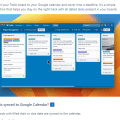Claims processing software has become indispensable for insurers and businesses seeking to streamline their operations and enhance customer satisfaction. These powerful tools automate data entry, detect fraud, and provide real-time tracking capabilities, revolutionizing the way organizations handle claims. The top features of claims tracking software that improve efficiency include automated workflows, intelligent document management, and advanced analytics for risk assessment and fraud detection.
Modern claims processing software offers customizable claim types and seamless integration with existing systems, allowing companies to tailor their processes to specific needs. This flexibility, combined with robust task management features, enables faster claim settlements and more effective communication between all parties involved. By leveraging artificial intelligence and machine learning, these solutions can predict trends, offer valuable insights, and support data-driven decision-making throughout the claims handling process.
Table of Contents
Key Takeaways
- Automated workflows and intelligent document management streamline claims processing
- Advanced analytics enhance risk assessment and fraud detection capabilities
- Customizable features and seamless integration improve overall efficiency and customer satisfaction
Key Features of Claims Tracking Software

Claims tracking software offers essential features that streamline the claims handling process, boost operational efficiency, and provide valuable insights. These tools automate workflows, enhance claims management, and deliver advanced analytics capabilities.
Automated Workflows and Operational Efficiency
Claims tracking software leverages automation to simplify and accelerate claims processing. Automated workflows reduce manual tasks, minimizing errors and freeing up staff time for more complex issues. The software can automatically route claims to appropriate adjusters based on predefined criteria, ensuring efficient allocation of resources.
Key automation features include:
- Automated data entry and validation
- Document generation and management
- Automated notifications and reminders
- Task assignment and prioritization
These features significantly reduce processing times and improve overall operational efficiency. By streamlining routine tasks, insurance companies can handle a larger volume of claims without compromising quality or customer service.
Claims Management and Processing
Comprehensive claims management functionality is at the core of effective tracking software. These tools provide a centralized platform for managing the entire claims lifecycle, from initial filing to final settlement.
Key claims management features include:
- First Notice of Loss (FNOL) handling
- Claims assignment and tracking
- Reserve management
- Payment processing
- Document storage and retrieval
Advanced systems often incorporate artificial intelligence and machine learning to enhance claims processing. These technologies can assist in fraud detection, claims triage, and damage assessment, further improving efficiency and accuracy.
Advanced Analytics and Reporting Capabilities
Modern claims tracking software offers robust analytics and reporting tools that provide valuable insights into claims data. These features enable insurance companies to make data-driven decisions and identify trends that can inform business strategies.
Key analytics and reporting capabilities include:
- Real-time dashboards and key performance indicators (KPIs)
- Customizable reports and data visualizations
- Predictive analytics for claims forecasting
- Trend analysis and pattern recognition
By using these tools, insurers can identify bottlenecks in the claims process, predict claim outcomes, and develop strategies to improve overall claims handling efficiency. Advanced analytics also support risk assessment and help in developing more accurate pricing models.
Integration, Compliance, and Security
Effective claims tracking software prioritizes seamless integration, robust compliance measures, and strong security protocols to streamline operations and protect sensitive data.
Compliance and Security Measures
Top claims tracking platforms incorporate multi-layered security features to safeguard policyholder information. Advanced encryption protects data in transit and at rest. Role-based access controls limit user permissions based on job functions. Audit trails track all system activity for accountability.
Compliance management tools help insurers adhere to regulatory requirements. Automated checks flag potential compliance issues during claims processing. Built-in reporting capabilities generate required documentation for audits and regulatory filings. Regular software updates ensure alignment with changing regulations.
Fraud detection algorithms analyse claims data to identify suspicious patterns or anomalies. Risk assessment tools evaluate claim characteristics to flag high-risk cases for additional review. These features support a robust risk management strategy.
Seamless Software Integration
Leading claims software integrates smoothly with existing insurance solutions. APIs enable connections to policy administration systems, billing software, and document management platforms. This creates a unified ecosystem for claims handling.
Integration with customer service tools provides a 360-degree view of policyholder interactions. Claims representatives can access all relevant information from a single interface. Automated data sharing between systems reduces manual entry and improves accuracy.
Cloud-based solutions offer scalability to accommodate growing claims volumes. Web-based access allows adjusters to work remotely. Mobile apps enable on-site claims documentation and processing.
Conclusion
Claims tracking software offers essential features that significantly enhance claims handling efficiency. Automation streamlines workflows, reducing manual tasks and errors. Advanced reporting and analytics provide valuable insights for data-driven decisions. Integration capabilities ensure seamless communication across departments and systems. Through using these key features, insurance companies can process claims faster, improve accuracy, and boost customer satisfaction.























